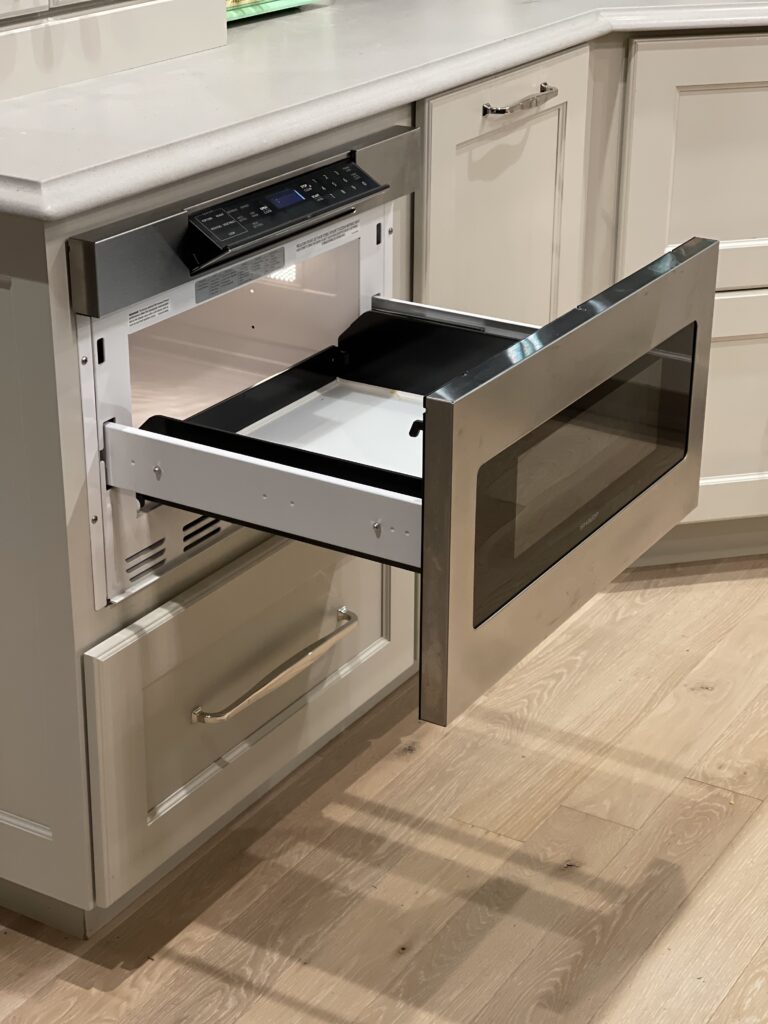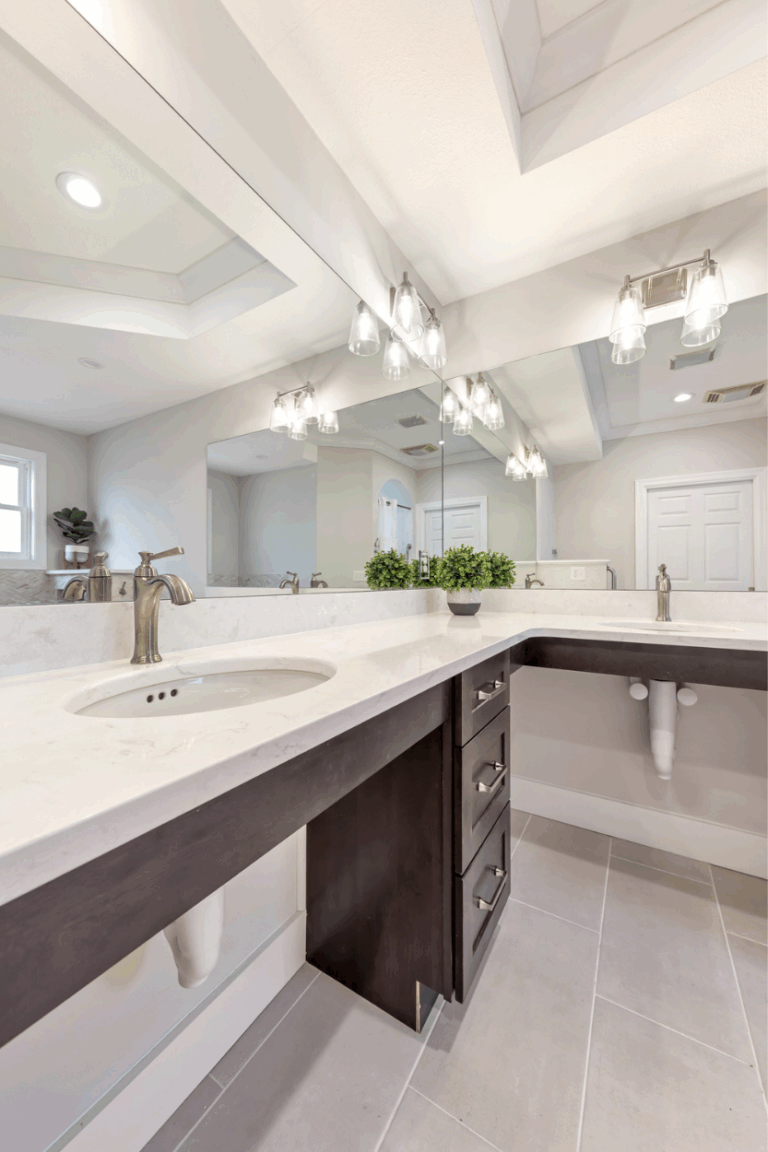Are you debating where to place your microwave—above, below, or on the countertop? Overwhelmed by choices like wattage, drawer vs. door, or accessibility features? You’re not alone!
As a universal and accessible design consultant, I help clients make informed decisions by researching products, analyzing trends, and incorporating real-world feedback. But when it comes down to it, the best choice is the one that fits your needs—both now and in the future.
One of the hottest trends in kitchen design is the microwave drawer, but is it right for you? And what about ADA compliance—does it really make a microwave more accessible? Let’s break it all down.
What Does “ADA-Compliant” Really Mean for Microwaves?
If you’ve been browsing microwaves, you’ve likely seen labels like ADA Compliant, ANSI (American National Standards Institute), and UFAS (Uniform Federal Accessibility Standards). While these certifications indicate the product meets minimum accessibility requirements, they don’t necessarily make it the most universally accessible option.
Understanding ADA Guidelines for Microwaves
The Americans with Disabilities Act (ADA) sets regulations primarily for public and commercial spaces. While these guidelines don’t apply to residential homes, they offer a helpful baseline for accessibility. General Electric (GE) offers a fantastic guide on ADA Compliant Appliances and a refined filter to search their ADA products.
Here are some general ADA recommendations for microwave placement:
- Reachable Height: Controls must be between 15-48 inches from the floor
- Installation Height: The bottom of the microwave should be between 15-37 inches from the floor
- Single-Hand Operation: Controls must be operable with one hand, without tight grasping, pinching, or twisting
- Minimal Force: Opening/closing should require less than 5 pounds of force
- Clearance Space: At least 30 inches in front of the open microwave for wheelchair users
Pro Tip: Some states offer tax deductions for integrating ADA-compliant appliances in residential homes—check with your accountant to see if you qualify!
Microwave Drawers: Pros & Cons
✅ Pros of a Microwave Drawer (Under-Counter Installation):
- Better Ergonomics – Easier access with minimal bending
- Three Access Points – Can be opened from the front, left, or right
- More Counter Space – A sleek, built-in look keeps countertops clutter-free
- Reduced Spill Risk – Pulling food up instead of out minimizes spills and burns
- Child Safety Lock – Helps prevent accidental use
❌ Cons of a Microwave Drawer:
- Slower Access – Drawers take longer to open and close compared to swing doors
- Child Safety Concerns – Watch out for tiny fingers when opening and closing!
- No Turntable or Convection Option – Unlike traditional microwaves, drawer models don’t rotate food or offer convection cooking
- Challenging to Clean – Reaching inside a microwave drawer can be tricky
Did You Know? All microwave drawers are manufactured by Sharp, regardless of brand—meaning if you opt for a drawer model, you’re getting a Sharp product under the hood!
How to Choose the Best Microwave for Your Home
- Know Your Priorities – Do you want a convection option? A turntable? A specific wattage?
- Measure Your Space – Consider your reach range and available clearance for door opening
- Think Universal – Choose a placement that works for all household members, from kids to seniors
- Door vs. Drawer – If opting for a door, consider a countertop or custom-height pantry cabinet installation
Final Thoughts: Is a Microwave Drawer Right for You?
If ergonomics, accessibility, and a sleek design are high on your priority list, a microwave drawer is an excellent option. However, if you prefer a turntable, convection cooking, or quicker access, a traditional microwave might be a better fit.
What’s your microwave setup? Are you team drawer or door? Let me know in the comments!
Looking for more accessible kitchen solutions? Follow Blue Day 2 for universal design tips, product recommendations, and stress-free home solutions.






